Special forces day
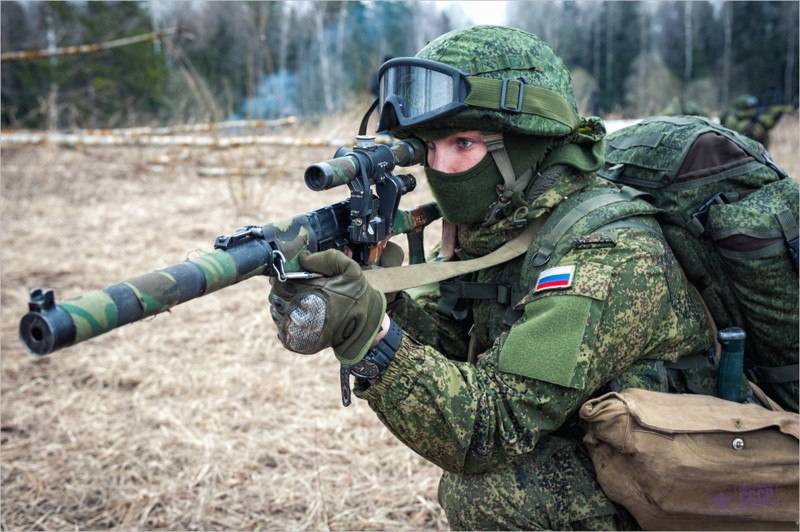
Unlike the Airborne Forces Day, which the entire country is aware of, the Day of the Special Forces is almost unknown to the general public - it is celebrated by “its own” and those whose lives for some reason turned out to be connected with special forces units. Moreover, the Special Forces Day is a young holiday. It was officially established by decree of the President of the Russian Federation only 31 of May 2006. And the very existence of the special forces units was kept secret for a long time. In the Soviet period, the domestic stories the word "special forces" there was a certain taboo. It was only in the 1980-ies, during the war in Afghanistan, that information about the existence of such units in the Soviet Army gradually began to leak.
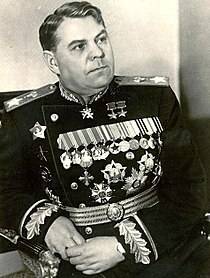 October 24 Day as a memorable date was not chosen by chance. October 24 1950 Marshal of the Soviet Union Alexander Mikhailovich Vasilevsky, then occupying the post of Minister of War of the USSR, ordered to form a special-purpose company 1 by May 1951 in May 46 of the year. The staffing of each company was established in 120 military. Separate special forces companies were created in all combined-arms and mechanized armies, airborne corps, as well as in military districts, if there were no army units in them. A total of 46 companies were created, including the 17 company - subordinated to the military district headquarters, the 22 company - subordinated to army headquarters, the 2 company - at the headquarters of the group of troops, the 5 company - at the headquarters of the airborne corps. Each company consisted of an 2 reconnaissance platoon, a radio communications platoon and a training platoon. The total number of special forces by May 1951 was 5520 military personnel.
October 24 Day as a memorable date was not chosen by chance. October 24 1950 Marshal of the Soviet Union Alexander Mikhailovich Vasilevsky, then occupying the post of Minister of War of the USSR, ordered to form a special-purpose company 1 by May 1951 in May 46 of the year. The staffing of each company was established in 120 military. Separate special forces companies were created in all combined-arms and mechanized armies, airborne corps, as well as in military districts, if there were no army units in them. A total of 46 companies were created, including the 17 company - subordinated to the military district headquarters, the 22 company - subordinated to army headquarters, the 2 company - at the headquarters of the group of troops, the 5 company - at the headquarters of the airborne corps. Each company consisted of an 2 reconnaissance platoon, a radio communications platoon and a training platoon. The total number of special forces by May 1951 was 5520 military personnel. This directive was the beginning of the official history of the Soviet, and then the Russian special forces. However, in fact, special units existed in the Soviet Union and before - since 1918, when Cheka were created at the Cheka, special-purpose units. During the years of the Great Patriotic War, special forces were operating at the front and in the rear of the enemy, which were part of the Red Army and the NKVD of the USSR. However, special forces as a special branch of the military were created after the war. And it was not by chance.
The history of the creation of the Soviet special forces was very closely connected with the beginning of the Cold War and the nuclear confrontation of the great powers. By creating special units in the armies and corps, the Soviet command calculated that they would be able to act in the enemy's rear, quickly receiving information and disabling the nuclear facilities, headquarters and command posts of the enemy armies. Thus, first of all, the Soviet special forces were intended for operations in the rear of the NATO armies, including in the territory of Western Europe and North America.
The Soviet military leadership assigned spetsnaz tasks to conduct reconnaissance in the deep rear of the enemy, destroy tactical and operational-tactical means of a nuclear attack, organize and conduct sabotage in the rear of the enemy, deploying in the rear of the enemy partisan movement, seizure of persons possessing important information - military commanders formations and units, officers of the enemy armies, etc.
Spetsnaz immediately after its creation was subordinated to the 2 General Administration of the General Staff of the USSR Armed Forces, as in the period from 1949 to 1953. called the General Intelligence Directorate of the General Staff. From the very beginning of its existence, the GRU special forces, taking into account the specifics of the tasks performed, had a structure that was different from other branches of the military, its own system of combat training and selection of personnel.
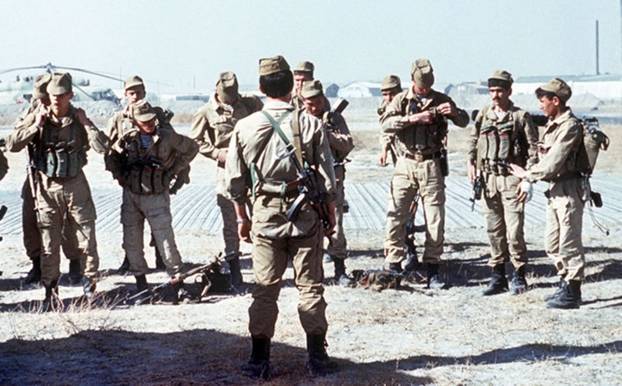
Naturally, when recruiting individual special-purpose companies, attention was paid to soldiers and sergeants who had already served in the CA for at least two years out of three years of conscription service. However, in 1953, due to the reduction of the armed forces, the number of separate special-purpose companies decreased from 46 to 11 orpsn. In 1957, the command took the following important decision on the integration of special forces. Thus, separate special-purpose battalions, created on the basis of 8 of separate special forces companies, appeared, while the remaining 3 separate special forces companies continued to exist in their status with an increase in the number of full-time troops to 123 in the company.
In 1957, separate special forces battalions were deployed as part of the Group of Soviet Forces in Germany, the Northern Group of Forces, the Carpathian, Turkestan and Transcaucasian Military Districts. At the same time, the number of personnel in the battalions differed significantly. The most numerous was the special purpose battalion 26, deployed as part of the GSVG - in it served 485 people. In the 27-m obspn in the Northern group of troops, in the 36-m obspn in the Carpathian military district and in the 43-m obspn in the Transcaucasian military district served on the 376 people, and the smallest was the 61-th obspn in the Turkestan military district - it has regular staff the number was established in 253 military personnel. Each battalion consisted of 3 reconnaissance companies, a company of special radio communications, a training platoon, a car platoon and an economic platoon.
In 1961, the Central Committee of the CPSU issued a decree “On the training of personnel and the development of special equipment for organizing and equipping guerrilla units”, which became the legal basis for the further reform of the special forces. In 1962, it was decided to form special-purpose framed brigades. This task was completed in the shortest possible time - from 19 in July 1962 to 1 in January 1963, 10 emerged from cropped individual special-purpose brigades (obrspn).
In peacetime, the framed brigades numbered 300-350 people, however, in the event of a war, due to mobilization measures, their numbers immediately increased to 1700 people. In peacetime, each separate GRU special mission brigade included a brigade command, a special radio squad (battalion of 2 companies), a mining company, a logistics company, a commandant platoon, 1-2 deployed separate special forces (3 battalion mouth) and 2-3 cropped individual detachment of special purpose. A total of 10 special forces teams were deployed.
In 1976, in connection with the creation of the Central Asian Military District, the 22-I separate separate GRU special-purpose brigade was created, and in 1977, due to aggravation of relations with China, the 24-I separate special brigade was deployed in the Zabaikalye military district. destination. Also, the special forces included a special purpose 1071 special training regiment, which trained the sergeant staff for intelligence units. After the introduction of the military rank of “ensign” to the SA, a regiment of ensigns was established in the regiment, which trained the deputy commanders of reconnaissance groups (platoons). The total number of special units subordinate to the GRU of the General Staff of the Armed Forces of the USSR in the period from 1957 to 1977. increased from 2 thousand 235 people to 44 thousand 845 people.
In addition, special forces subordinate to the GRU were also created as part of the Naval fleet USSR. The first special forces unit appeared in 1956 as part of the Black Sea Fleet, then similar units - marine reconnaissance points - were created in other fleets. The naval intelligence point in terms of personnel was equated to a special-purpose company in the ground forces - 122 people served in it. In the event martial law was introduced, a separate special-purpose brigade was deployed on the basis of each naval reconnaissance point. At the same time, the marine intelligence point of the Black Sea Fleet since 1968 was called a separate special-purpose brigade, although it still had a population of 148 people.
The combat missions of naval commandos included reconnaissance of enemy coastal facilities, destruction or incapacitation of infrastructure, warships and auxiliary ships, guidance aviation and missiles at enemy targets, conducting enemy reconnaissance during the landing of marines on the coast. Back in 1967, the 316th separate special-purpose training detachment was deployed in Kiev to train personnel of naval special forces.
The creation and existence of special forces at that time was kept in strict confidence. Even information about the presence of the USSR nuclear weapons were more accessible to the public. The existence of the GRU Special Forces was not even suspected by many officers who served in the Soviet Army at that time, not to mention privates and sergeants. With increased secrecy associated with the lack of special forces of their own form. If necessary, the special forces used the form and symbolism of any combat arms of the SA - from telecom operators to tank crews, but most often still used the form of the Airborne Forces. Since the special forces were parachuting training, no one ever challenged the right of military intelligence officers to wear blue berets and telnikov. Moreover, the bulk of the officer corps arrived at the subunits from the Ryazan Higher Airborne Command School.
In 1979, the war began in Afghanistan, which became a serious test for the entire Soviet military machine. The divisions of the special mission of the GRU took the most active part in it, although initially they were created and prepared not at all for these purposes. 15-I, and then 22-I separate special-purpose brigades were redeployed to Afghanistan, and in Chirchik, 467-nd separate special-purpose regiment was created to train servicemen of military service for combat operations “beyond the river”.
The participation of the special forces in the Afghan war began with the fact that 24 June 1979 was based on the 15-th separate special brigade of the Turkestan military district was created 154-th separate special-purpose squad (154-oosn), which was designed specifically to protect the Afghan President Nur Mohammad Taraki and had to be transferred to the neighboring state. But Taraki was killed and power in the country passed to Hafizullah Amin. 7 December 1979 d. 154 th oospn was transferred to Bagram, and December 27, together with the special forces of the KGB of the USSR, participated in the storming of the Amin Palace.
In the Afghan war, the special forces were destined to play a special and very significant role. Given the specifics of the fighting, the special forces, who were actually trained as partisans, were able to quickly navigate and turned into the most effective counter-guerrilla formations that delivered crushing punches on the Mujahideen.
The Afghan war also revealed a new plane for the use of special-purpose units — local armed conflicts in which the special forces were to perform the tasks of finding and destroying terrorist groups and armed forces of the enemy. For officers and warrant officers of the special forces, Afghanistan became an invaluable school of combat experience, the skills acquired in which soon had to be applied in the post-Soviet space — in numerous wars and conflicts that shook the former Soviet republics after the collapse of a single state.
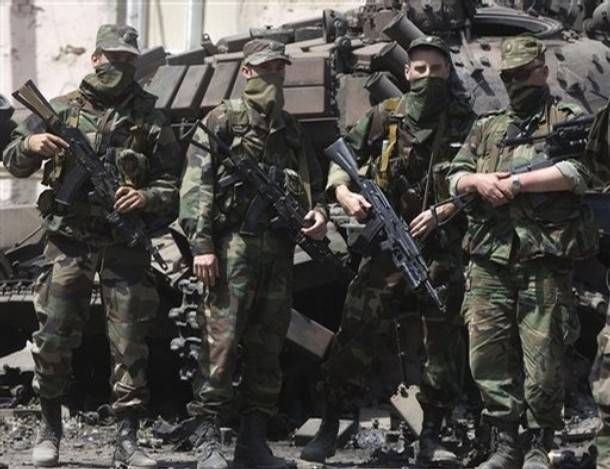
After the collapse of the USSR, not only civilian industrial and transport infrastructure, but also the armed forces, including special-purpose units, were subject to division. But most of the Soviet special forces were withdrawn to the territory of the Russian Federation and formed the basis for the formation of the Russian special forces - the direct heir to the traditions of their glorious predecessor. About all the operations in which the special forces of the GRU took part (now - the Main Directorate of the Main Staff of the Armed Forces of the Russian Federation) are still unknown to us. Tajikistan, both Chechen campaigns, the war with Georgia 2008 of the year, ensuring the reunification of the Crimea, the fight against terrorism in Syria - this is not a complete list of the stages of the combat path of the Russian special forces.
In 1994, on the basis of the 901-th and 218-th separate special-purpose battalions, the 45-th separate special-purpose regiment of the Airborne Forces was formed, on the basis of which, in 2015, the 45-th separate special-purpose guard division was formed. This is the special forces of the Airborne Forces, which, by their tasks and combat training, do not differ much from the special units of the GRU.
Today, on the Day of Special Purpose Units, we congratulate all the servicemen and service veterans who have had a difficult but honorable share in serving special forces - the real elite, the pride of the Russian armed forces.
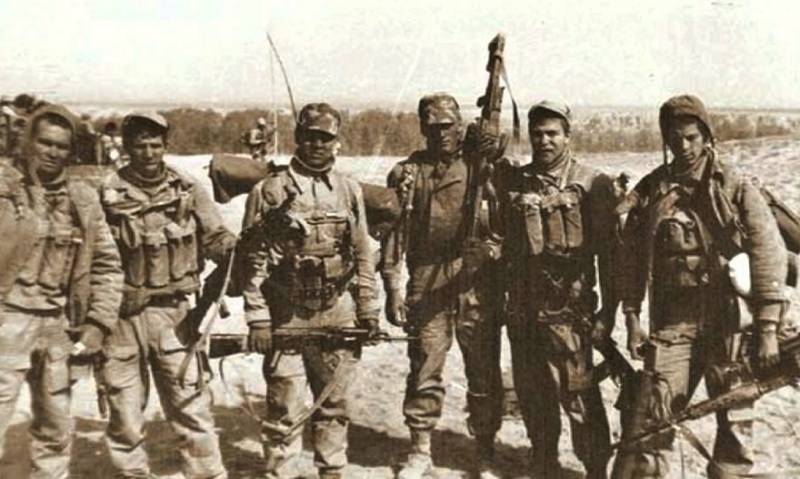
Information